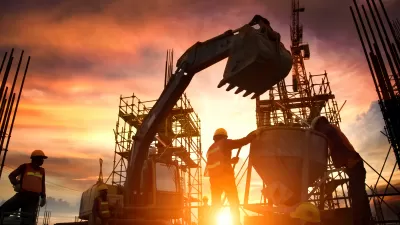While the housing market showed signs of improvement last year, economists are now confident that a recovery is underway. Housing currently adds 13 percent to the nation's economic growth, but is this a good thing?
With two-thirds of the nation’s 300-plus housing markets in recovery mode, economists are feeling confident about the prospects for the continued recovery of the housing market and the overall economy. While 1.4 million single-family housing starts is considered "normal" by the National Association of Home Builders (NAHB), chief economist David Crowe expects that this number will rise from 535,000 last year to 650,000 this year to 844,000 in 2014. However, "if the new-home sector were to expand any faster," Crowe cautions, "builders would run into supply and labor shortages that would drive prices too high, too fast."
Last year, national home prices increased at a 6 percent annual rate. "The current recovery," said Crowe, "is now broad enough and of sufficient enough size to affect the national figures." The appreciation can be attributed at least partly to the media's optimistic coverage, which made people feel more comfortable about the recovery and increased demand. Frank Nothaft, chief economist at Freddie Mac, agreed that "[d]emand has been the missing stimulus" and that rising home values this year will "push buyers forward before house prices and mortgage rates move any higher." The 25-34 age group's jump in household formations has also helped the market, though primarily in apartment construction.
Meanwhile, at Strong Towns, Charles Marohn isn't buying the hype. He believes we're in for a bumpy ride over the long-term as America reckons with the fallout from its six decade "suburban experiment."
"With an economy based primarily on propping up the housing market, we've become powerless to solve the underlying unemployment problem," he explains. "The private sector can simply no longer borrow and build our way to anything that feels like prosperity, real or not. A fundamental shift needs to take place in how we generate wealth and prosperity, but we're stuck. We need housing to go up to solve the unemployment problem, but another housing bubble does not an economy make."
"This is going to be painful, but I don't see any way forward except for a local strategy of building strong towns."
FULL STORY: Housing Sector Expected to Climb Higher in 2013

Maui's Vacation Rental Debate Turns Ugly
Verbal attacks, misinformation campaigns and fistfights plague a high-stakes debate to convert thousands of vacation rentals into long-term housing.

Planetizen Federal Action Tracker
A weekly monitor of how Trump’s orders and actions are impacting planners and planning in America.

San Francisco Suspends Traffic Calming Amidst Record Deaths
Citing “a challenging fiscal landscape,” the city will cease the program on the heels of 42 traffic deaths, including 24 pedestrians.

Defunct Pittsburgh Power Plant to Become Residential Tower
A decommissioned steam heat plant will be redeveloped into almost 100 affordable housing units.

Trump Prompts Restructuring of Transportation Research Board in “Unprecedented Overreach”
The TRB has eliminated more than half of its committees including those focused on climate, equity, and cities.

Amtrak Rolls Out New Orleans to Alabama “Mardi Gras” Train
The new service will operate morning and evening departures between Mobile and New Orleans.
Urban Design for Planners 1: Software Tools
This six-course series explores essential urban design concepts using open source software and equips planners with the tools they need to participate fully in the urban design process.
Planning for Universal Design
Learn the tools for implementing Universal Design in planning regulations.
Heyer Gruel & Associates PA
JM Goldson LLC
Custer County Colorado
City of Camden Redevelopment Agency
City of Astoria
Transportation Research & Education Center (TREC) at Portland State University
Jefferson Parish Government
Camden Redevelopment Agency
City of Claremont




























